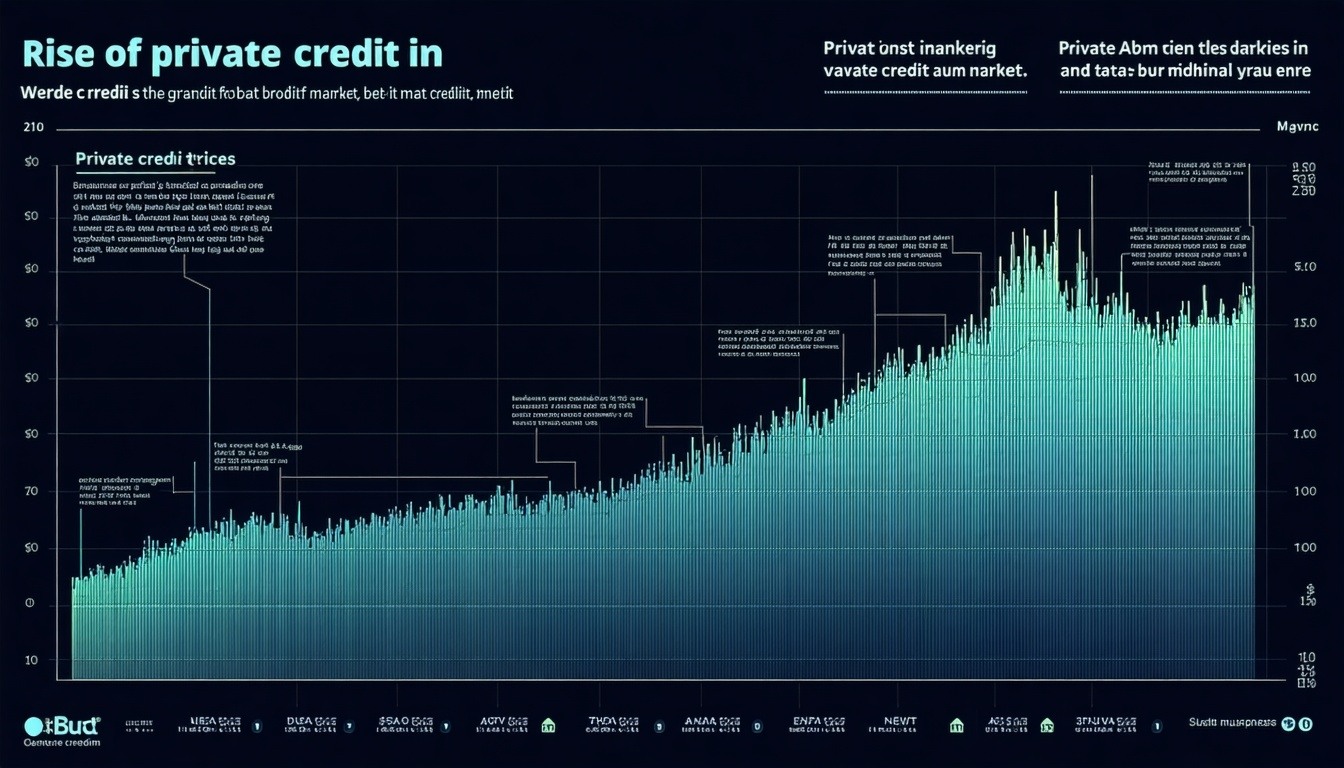How Private Credit Is Reshaping Global Finance

Private credit is making waves in global finance, promising both lucrative opportunities and significant risks for investors and institutions alike.
The Rise of Private Credit: A New Financial Powerhouse
Private credit has rapidly emerged as a significant force in global finance, filling a void left by traditional banks. As banks continue to face stringent regulatory requirements and capital constraints, private credit funds have stepped in to provide much-needed financing to mid-market companies. This shift has been driven by investors' search for higher yields in a low-interest-rate environment.
The growth of private credit is also fueled by its flexibility and customization. Unlike traditional loans, private credit solutions can be tailored to meet the specific needs of borrowers, offering more attractive terms and conditions. This adaptability has made private credit an appealing option for a wide range of businesses, from start-ups to established enterprises looking for growth capital.
Key Opportunities in the Private Credit Market
One of the primary opportunities in the private credit market is the potential for higher returns compared to traditional fixed-income investments. Private credit investments often come with higher interest rates, providing investors with an attractive income stream.
Moreover, private credit offers diversification benefits. By investing in a different asset class, investors can reduce overall portfolio risk. Additionally, the private credit market provides access to unique investment opportunities that are not available in public markets, such as direct lending to niche industries or distressed debt.
Risks and Challenges: Navigating the Private Credit Landscape
Despite its opportunities, the private credit market also presents several risks and challenges. One of the main risks is credit risk, as private credit investments are often extended to companies with lower credit ratings or those that are not yet mature. This increases the likelihood of default, which can impact returns.
Liquidity risk is another significant challenge. Private credit investments are typically less liquid than public market investments, making it harder for investors to exit positions quickly. Additionally, the lack of transparency in the private credit market can make it difficult for investors to conduct thorough due diligence.
Regulatory Considerations and Compliance in Private Credit
The private credit market operates under a different regulatory framework compared to traditional banking. This can present both advantages and challenges. On one hand, private credit funds are often subject to fewer regulatory constraints, allowing for more flexibility in structuring deals. On the other hand, the lack of regulation can increase the risk of fraudulent activities and market abuse.
Investors and managers in the private credit space must stay informed about evolving regulatory requirements and ensure compliance with applicable laws. This includes adhering to anti-money laundering (AML) regulations, know-your-customer (KYC) requirements, and other financial regulations that aim to protect investors and maintain market integrity.
Future Trends: What Lies Ahead for Private Credit
The future of private credit looks promising, with several trends expected to shape the market. One key trend is the increasing institutionalization of private credit, as more institutional investors, such as pension funds and insurance companies, allocate capital to this asset class.
Technological advancements are also likely to play a significant role in the evolution of private credit. Innovations in financial technology can enhance the efficiency of credit assessment, risk management, and loan servicing processes. Additionally, the growing focus on environmental, social, and governance (ESG) criteria is expected to influence investment decisions in the private credit market, with more funds incorporating ESG factors into their strategies.